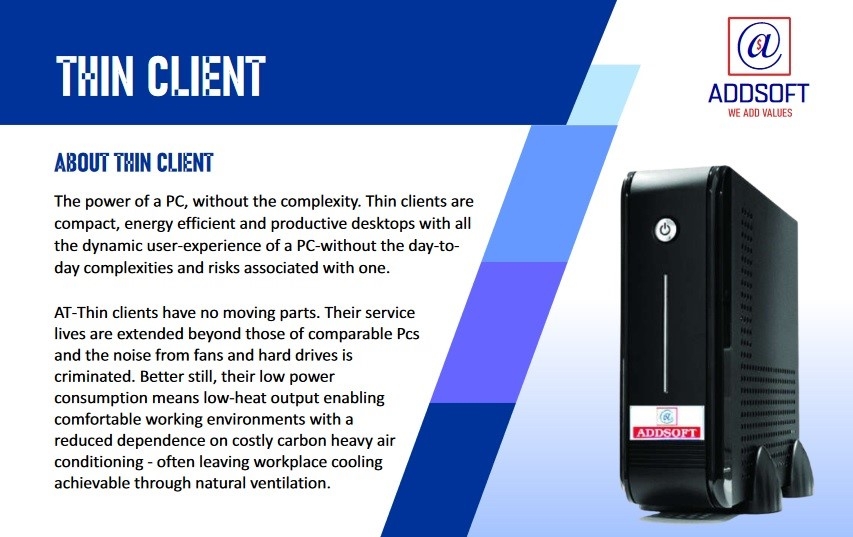Demystifying Thin Clients: Revolutionizing Workplace Computing

In the ever-evolving landscape of workplace technology, thin clients have emerged as a game-changer, offering a streamlined and cost-effective alternative to traditional desktop computing. In this guide, we'll delve into the world of thin clients, exploring what they are, how they work, and why they're gaining popularity in various industries.
Thin clients are lightweight computing devices designed to access applications and data that are stored on a centralized server or in the cloud. Unlike traditional desktop PCs, thin clients typically have minimal processing power and storage capacity, relying on server-side resources for computing tasks.
Thin clients offer several compelling benefits for businesses:
Cost-effectiveness: Lower hardware costs, reduced energy consumption, and simplified management translate to significant cost savings.
Enhanced security: With data stored centrally, thin clients minimize the risk of data breaches and ensure better data security.
Streamlined management: Centralized software updates, easier troubleshooting, and remote management make thin clients ideal for large-scale deployments.
Improved reliability: With fewer moving parts and simplified configurations, thin clients tend to be more reliable than traditional PCs.
Thin clients find applications across various industries and environments:
Corporate offices: Ideal for general productivity tasks, such as email, web browsing, and office applications.
Healthcare facilities: Used for accessing electronic health records (EHRs), medical imaging, and other healthcare applications.
Education sector: Deployed in classrooms and computer labs for student learning and administration.
Retail and hospitality: Utilized in point-of-sale (POS) systems, self-service kiosks, and digital signage.
There are several types of thin clients available, including:
Hardware-based thin clients: Dedicated devices with minimal hardware specifications.
Software-based thin clients: Software solutions that convert existing PCs into thin clients, leveraging their existing hardware.
Virtual desktop infrastructure (VDI): Hosted virtual desktops delivered to thin clients over the network, providing a flexible and scalable computing environment.
When deploying thin clients, organizations should consider:
Network infrastructure: Ensuring sufficient bandwidth and reliability to support thin client connectivity.
Compatibility: Ensuring compatibility with existing systems and applications.
Security: Implementing robust security measures to protect sensitive data and prevent unauthorized access.
Looking ahead, the future of thin clients is marked by:
Integration with emerging technologies: Integration with edge computing, IoT, and artificial intelligence (AI) to enhance performance and functionality.
Cloud-based solutions: Increasing adoption of cloud-based desktops, enabling greater flexibility and scalability.
As businesses strive for greater efficiency, flexibility, and security in their computing environments, thin clients emerge as a compelling solution. By embracing thin client technology, organizations can streamline operations, reduce costs, and future-proof their IT infrastructure in an increasingly digital world.
Ready to explore the benefits of thin clients for your organization? Contact us today to learn more about how thin client solutions can revolutionize your workplace computing.
- Industry
- Art
- Causes
- Crafts
- Dance
- Drinks
- Film
- Fitness
- Food
- Games
- Gardening
- Health
- Home
- Literature
- Music
- Networking
- Other
- Party
- Religion
- Shopping
- Sports
- Theater
- Wellness
- News


